
Switching from one math tool to another is difficult, and these difficulties may be prohibitive even if a need for change has been identified. The challenge is to determine when the benefits will outweigh the costs.
This whitepaper examines what five typical ex-Mathcad users now do in Maple, and why they determined that it was worth the effort of switching. It will also discuss why some evaluators ultimately decide to remain with Mathcad.
Products
Next Steps
High-level commercial math software tools, such as Mathcad® and Maple, all let you do math, write programs, analyse data and generate plots.
But each tool has a different user interface, analysis features, programming language and interaction model. This means that they are not readily interchangeable. Once an engineer or a company has settled on a math tool, switching to another is difficult, and these difficulties may be prohibitive even if a need for change has been identified. The challenge is to determine when the benefits will outweigh the costs.
Maplesoft has considerable experience in helping Mathcad users objectively evaluate Maple as a potential alternative. This whitepaper will examine what five typical ex-Mathcad users now do in Maple, and why they determined that it was worth the effort of switching. It will also discuss why some evaluators ultimately decide to remain with Mathcad.
The Mathcad users discussed in this paper are an amalgamation representing common types of engineers who have made the switch to Maple. These personas are drawn from the years of experience Maplesoft has working with Mathcad users who have chosen to make the switch to Maple.
This mechanical engineer used a combination of Mathcad and Excel for many years. He wanted to switch to a math tool with more tools for project management, report generation and connectivity, while still offering features like natural math notation and units. His work revolved mostly around structural design, and frame and truss analysis.
He also wanted to distribute his design calculations by converting the worksheet to a PDF.
After evaluating several alternatives, he transitioned his work to Maple.
In a typical frame analysis, the engineer wanted to expose the equations in a manner that could be audited. He wanted to use units in his parameters, and have them flow through to the final results. He also wanted his design documents to be clear, with a crisp look and feel.
Figure 1 shows a Maple worksheet that is typical of the work this engineer now does in Maple. The worksheet includes text, images and math.

Figure 1: Frame Analysis
The engineer regularly imported structural steel properties and other data into his Mathcad worksheets. These properties were distributed as a spreadsheet with the Mathcad worksheet file, introducing the issue of maintaining file dependencies.
After moving to Maple, he now packages the spreadsheet and worksheet in a single file (or calls the properties from a network location). This eliminates any file dependency issues and helps him to generate applications similar to Figure 2.

Figure 2: Structural Steel Design
This user works as a Senior Analyst in the spacecraft industry. She was tasked with analysing phenomena related to propulsion, combustion and thermodynamics.
She moved from Mathcad to Maple because of the built-in thermochemical data, the numeric solvers and report generation tools. She also used some of the technical content on the Maple Application Center website (a library of pre-built worksheets) as a starting point for her own work.
In one application, the aerospace engineer used Maple to compute the combustion temperature and chemical composition of the exhaust gases of a rocket. This enabled her to calculate the characteristic velocity and impulse of the spacecraft.
Her rationale for doing this in Maple was that she wanted use first-principles mathematical modelling to help herself understand what dedicated black-box tools for rocket performance were doing.

Figure 3: Rocket Thrust and Performance
The aerospace engineer wanted to calculate the performance characteristics of a turbojet, with Figure 4 being typical. She used Maple to compute properties like enthalpies, entropies and specific heat capacities as a function of temperature and pressure. These were used in a heat balance around the thermodynamic process. Finally, the thermodynamic cycle was visualised on a built-in temperature-entropy chart
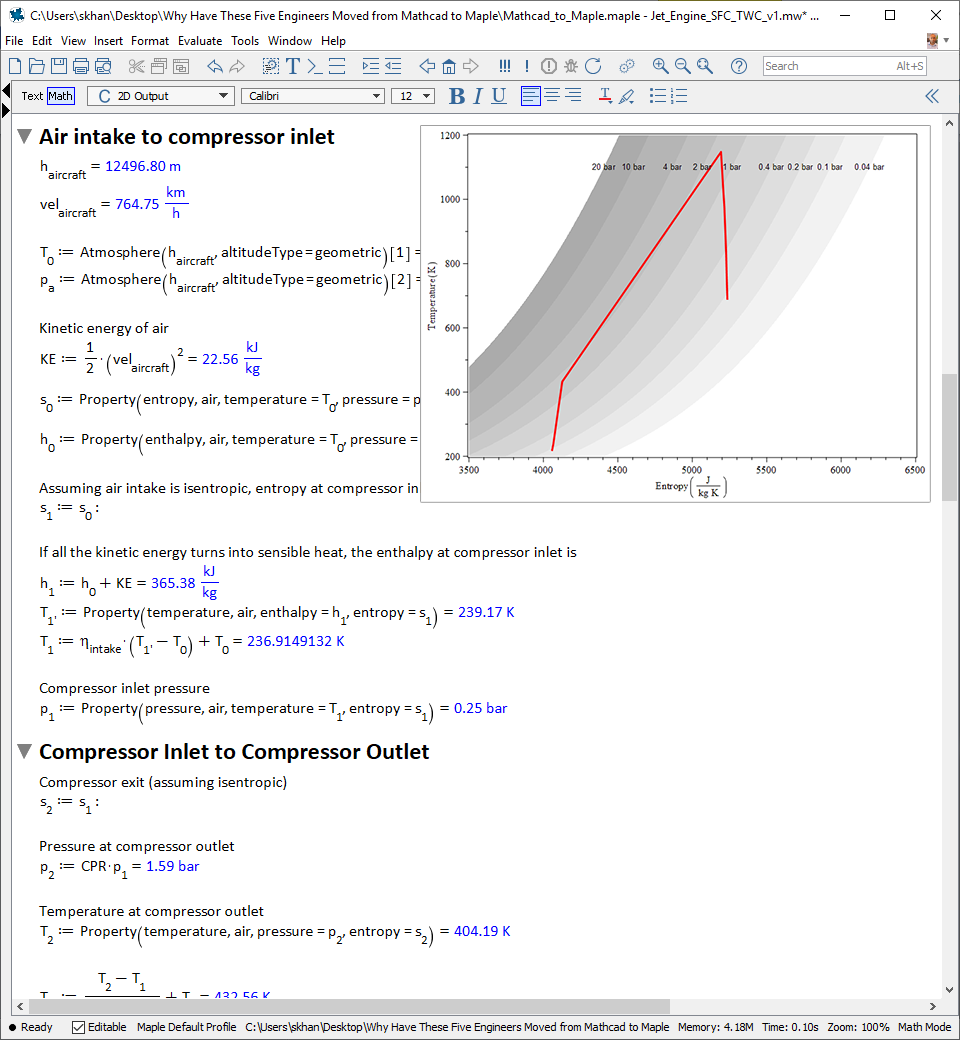
Figure 4: Performance of a Turbojet
This electrical engineer works for a major automotive supplier, and had used Mathcad for well over 30 years. After a 6 month evaluation, he decided to slowly transition his work over to Maple. To minimize disruption, he maintained a Mathcad license until the transition was complete.
He felt that analogue circuit analysis and worst case circuit analysis were ideal applications for Maple because of the flexibility of its symbolic math and high-speed numerical math.
Maple lets you symbolically derive and rearrange the equations that describe voltage and current in a circuit. Figure 5 represents a typical worksheet.
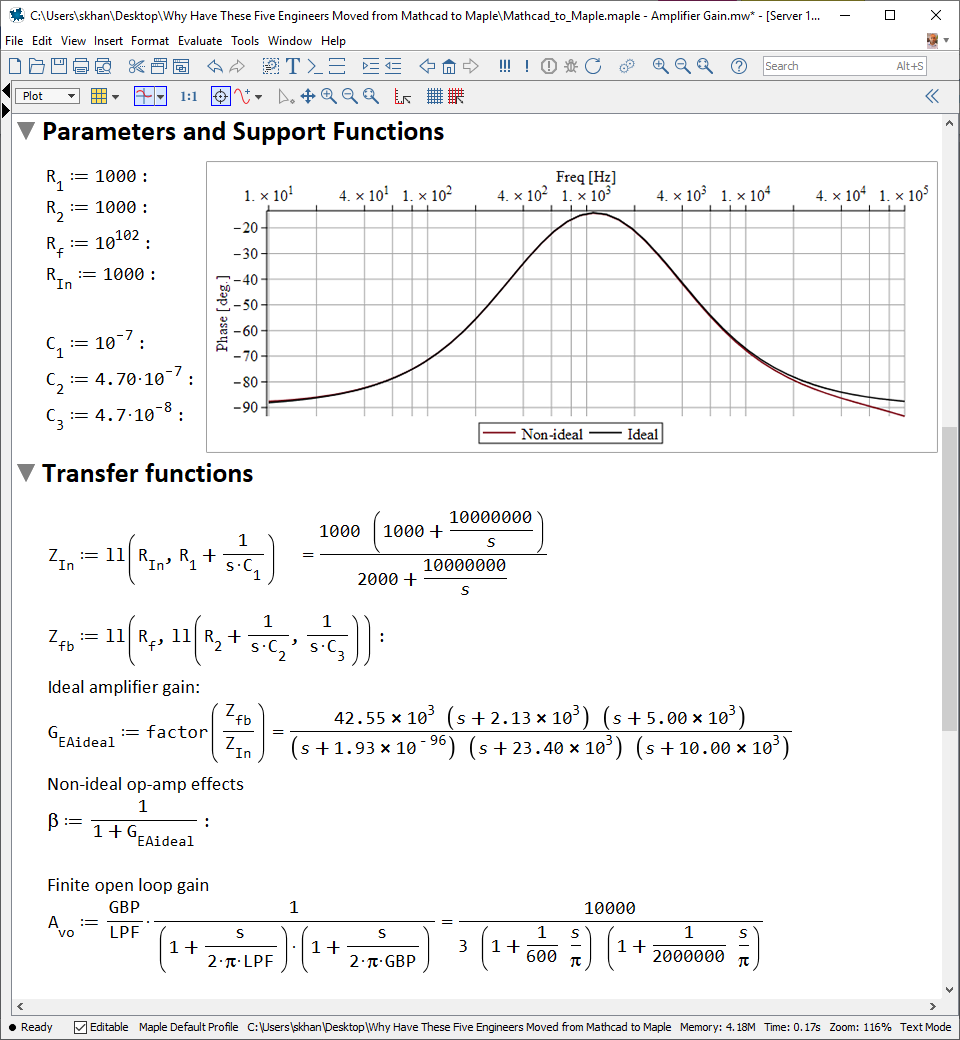
Figure 5: Gain of an Amplifier Circuit
The worksheet contains nodal equations derived from Kirchhoff's voltage and current laws. These are symbolically manipulated to generate the transfer functions that represent the gain of the circuit.
The electrical engineer uses Maple's tools for command-free analysis, as illustrated in Figure 6. For example, you can convert an s-domain equation into to the t-domain with a few mouse clicks.

Figure 6: Command-free Analysis - Converting s-domain equation into t-domain
The electrical engineer is tasked with worst case circuit analysis. He uses two approaches in Maple.
Figure 7 shows an example of a typical worksheet for worst case circuit analysis using Monte-Carlo simulation.
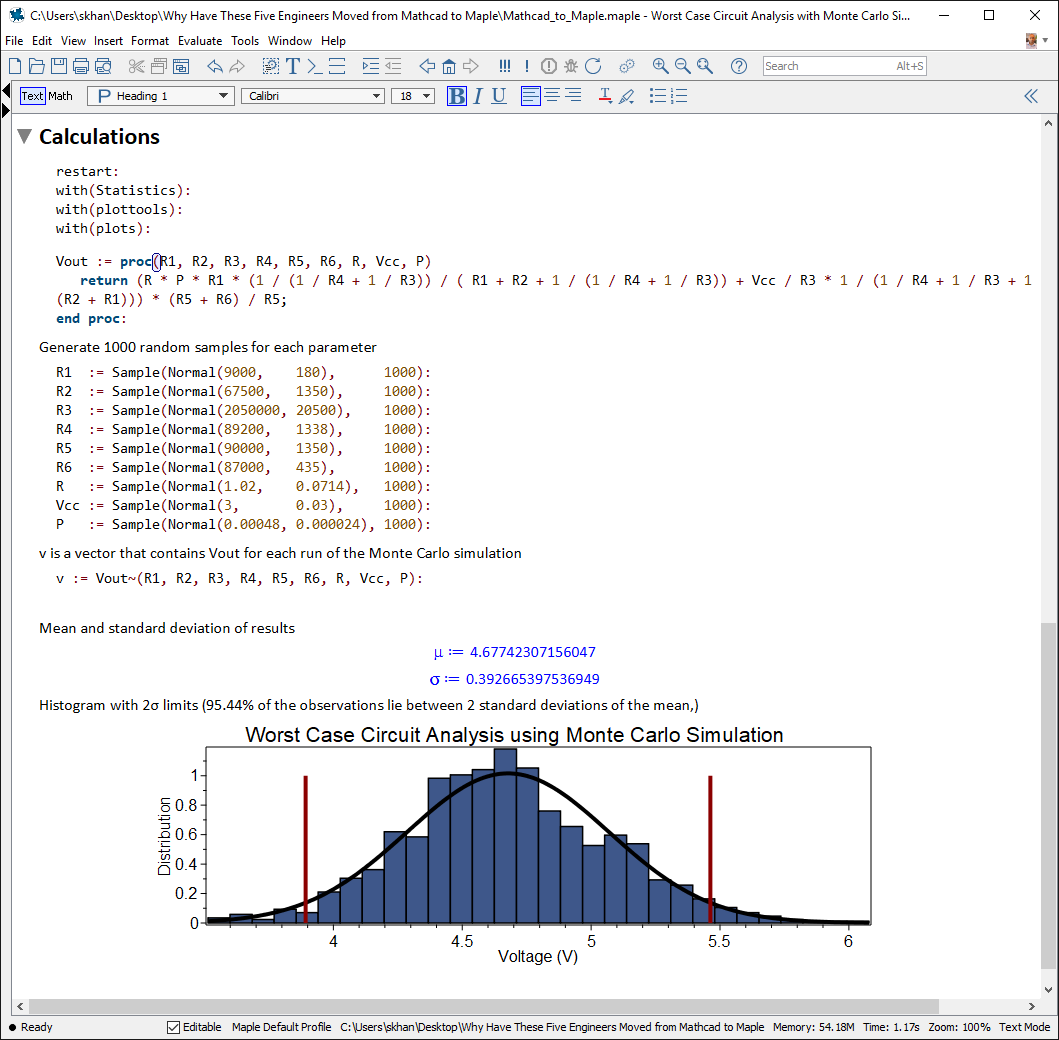
Figure 7: Worst Case Circuit Analysis
He also programmatically creates tables of results, as shown in Figure 8.

Figure 8: Table of Results Generated in Maple
This engineer was a recent graduate who had used Mathcad at university.
When he moved into industry, he was tasked with creating interactive applications to explore various phenomena and design problems in a chemical plant. He also needed to deploy the applications at relatively low cost.
Despite his previous experience with Mathcad, he surveyed the tool market, evaluated Maple, and subsequently became a user because of the application building and deployment options. He also used Maplesoft's professional services to assist with development.
He uses two of Maple's tools for application deployment.
Both deployment tools let his colleagues use the applications he created without having Maple themselves. MapleNet ensures that only the latest version of his Maple application can be used.
Maplesoft's professional services assisted him with building his initial applications, and also provided consulting on some of his design challenges.
The gas orifice calculator in Figure 8 is typical of the type of applications he now creates in Maple. No math is exposed or can be changed - the user simply sees drop down menus, text boxes and buttons.
The application can be deployed via the Maple Player or MapleNet.
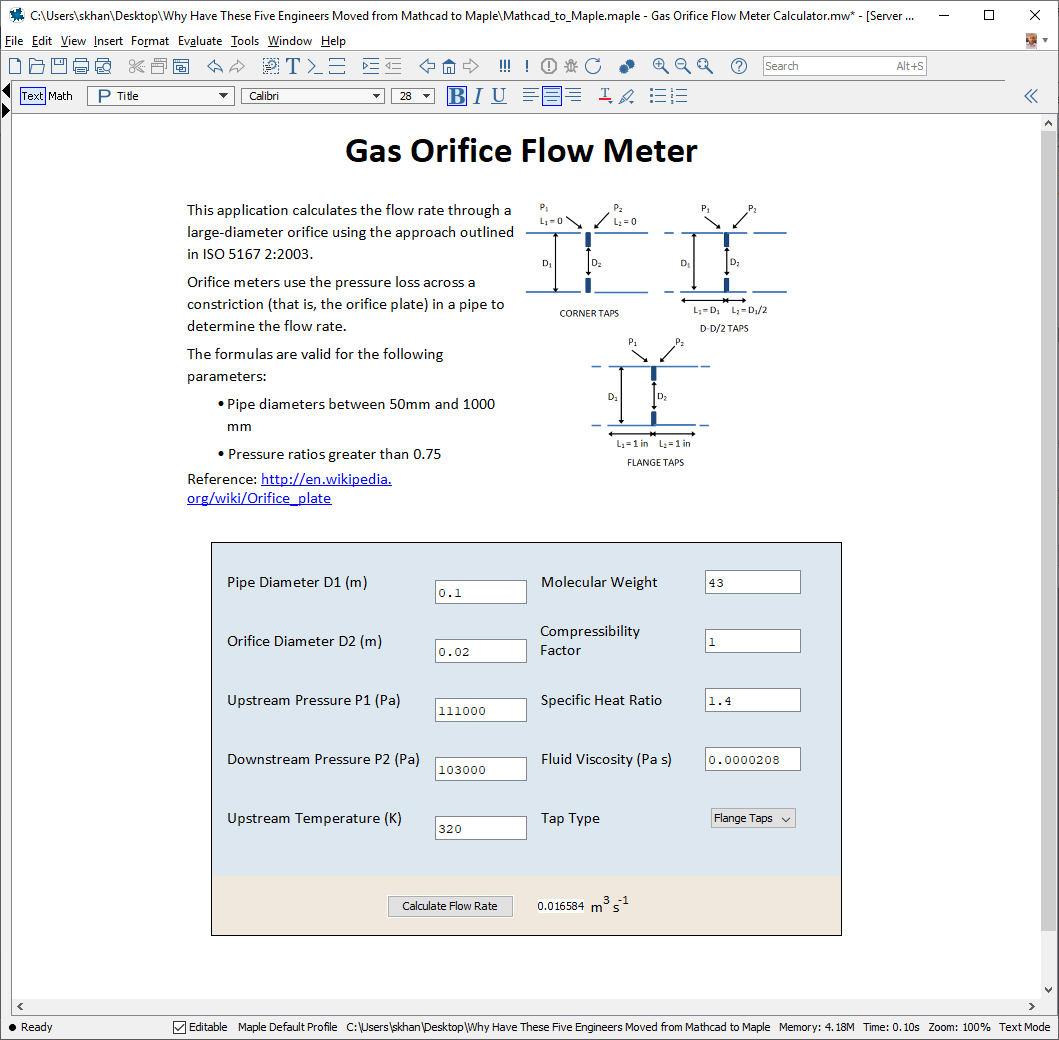
Figure 9: Gas Orifice Flow Meter
This application calculates the most economic pipe diameter and fluid velocity given the predicted lifetime running costs. It features an expandable section that gives background information on the theory and assumptions, so that this information is available to anyone who uses the application.
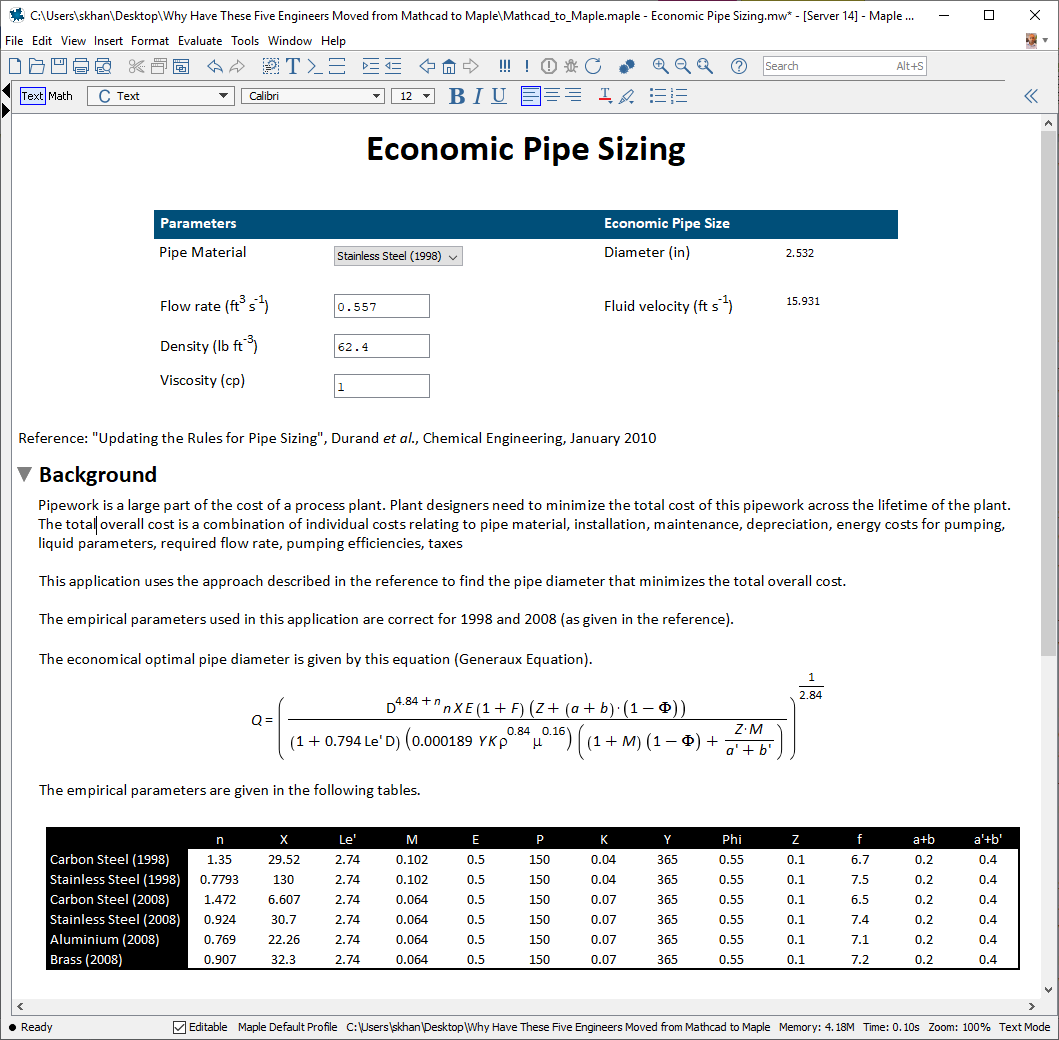
Figure 10: Economic Pipe Size
This application contains a plot that updates smoothly when parameter values are changed with sliders and text boxes, even when used in a web browser.
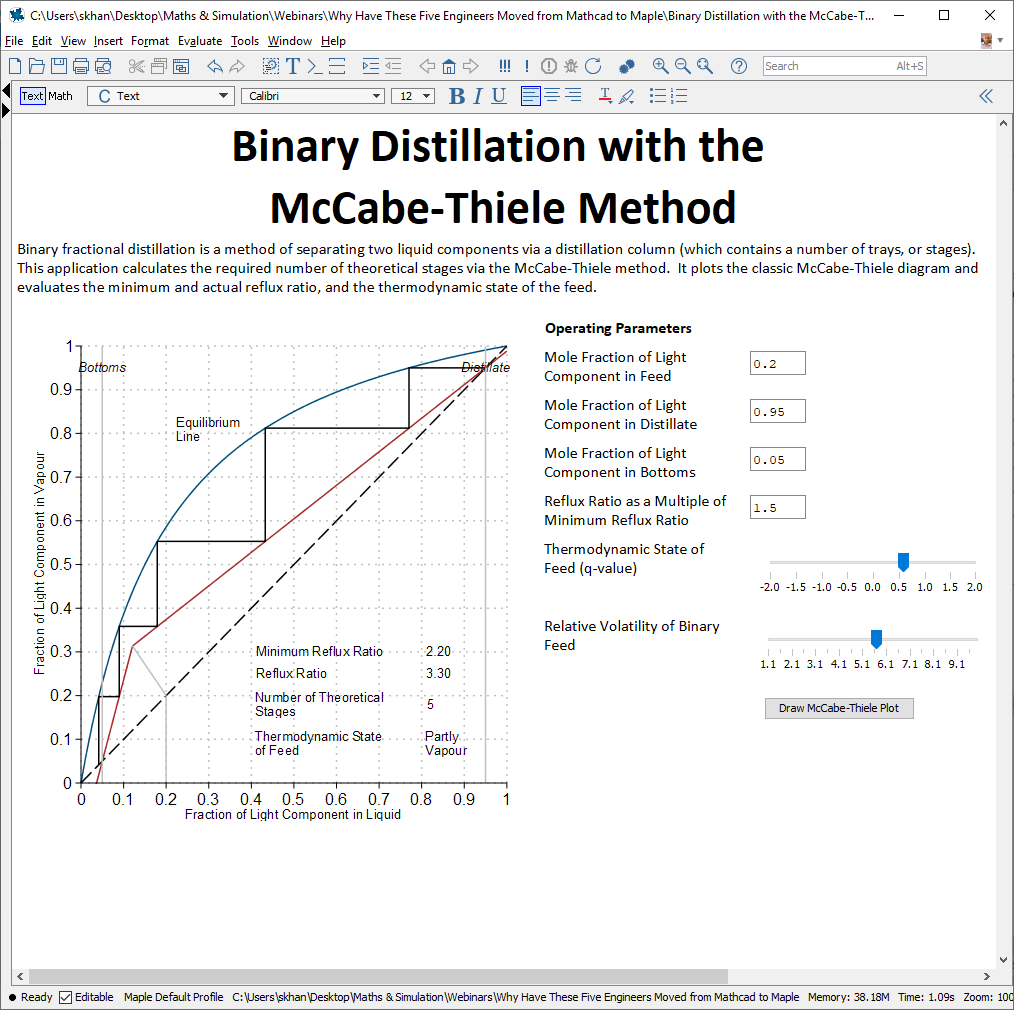
Figure 11: Distillation
This acoustic engineer had trained in signal processing and was using Mathcad for audio processing. However, he moved his work to Maple after discovering it is faster at processing large volumes of data, and with greater memory efficiency.
In Maple, he filters signal, performs time frequency analysis, removes noise from audio, synthesizes guitar chords with reverb, and even creates special audio effects.
Rather than a dedicated audio processing package, he uses a math tool because he wants to programmatically link the results into a broader process for developing audio compression and transmission algorithms.
The acoustics engineer often develops audio filtering applications in Maple, similar to Figure 12.
The application applies a high-pass Butterworth filter to the audio. A spectrogram is generated of the audio before and after filtering; this clearly demonstrates that lower frequencies have been attenuated.
The acoustics engineer particularly appreciates Maple's tools for time-frequency and frequency domain analysis.
In addition to using the built-in filters, he also develops his own filtering algorithms in Maple's programming language. These algorithms are exported to C for use in another code base.
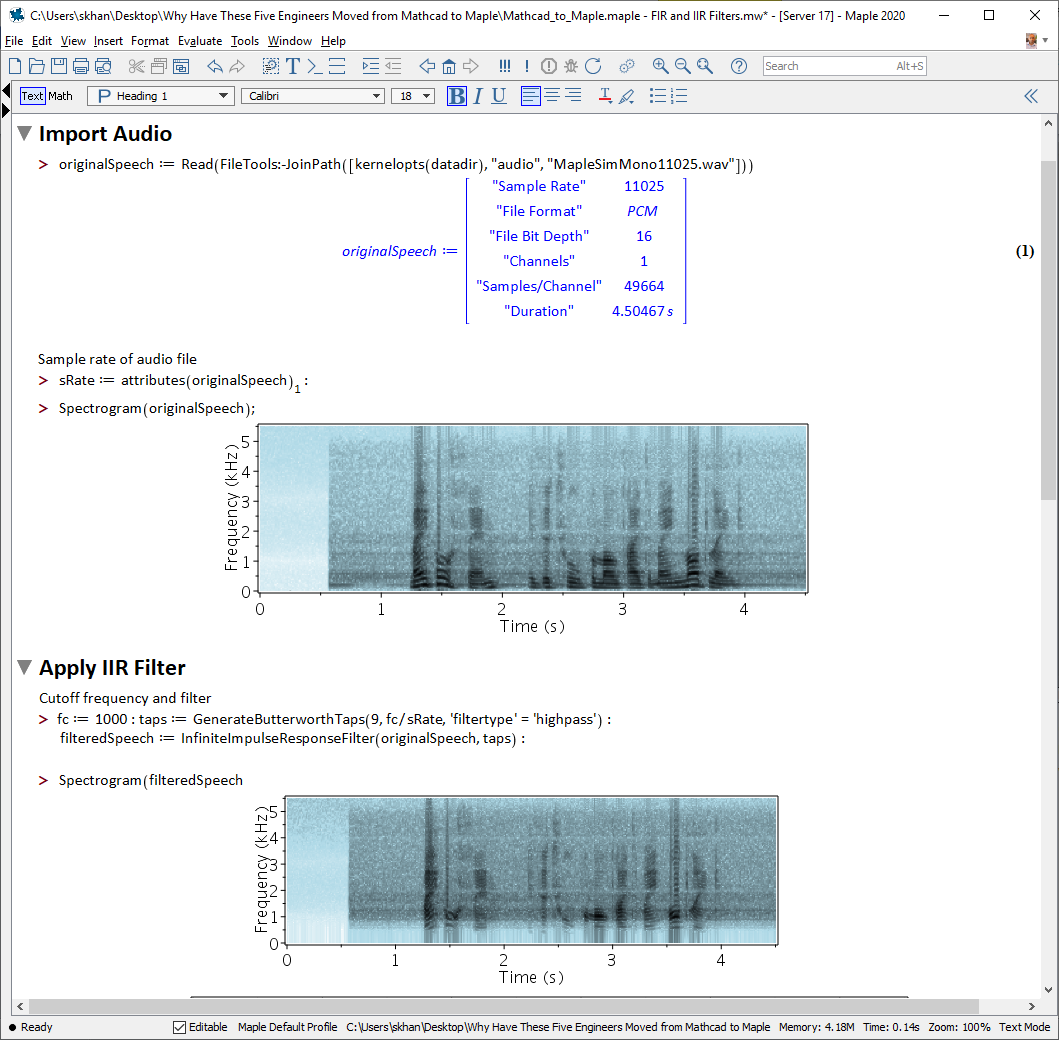
Figure 12: Processing Audio with IIR Filters
The acoustics engineer often adds special effects to audio using a mathematical approach called convolution (he found that Maple's convolution tools are several orders of magnitude faster than those in Mathcad, and can process larger files). He also shifts the pitch of instrumental sounds using frequency domain methods (which again requires fast, memory-efficient algorithms).
While in Maple, he examines the time-frequency properties of the audio (before and after processing) with spectrograms (as illustrated in Figure 13).
The resulting audio is written out to a high precision 32-bit wave file for further processing.

Figure 13: Adding Reverb to Audio with Convolution
There is a tranche of engineers who remain with Mathcad after evaluating Maple. Those who choose to remain with Mathcad typically were looking for a replacement that provides:
Because Maple is a different tool with its own interface and paradigms, Maple does not meet these requirements. For these engineers, the benefits of remaining with Mathcad outweigh any gain offered by Maple.
In this paper, you have seen what five typical engineers are now doing in Maple after switching from Mathcad. From this, we can draw some conclusions about the pull factors that drew them into Maple.
If you're interested in evaluating Maple as a potential replacement for Mathcad, we recommend you keep these points in mind:
Switching from Mathcad to Maple is a decision that needs to be made with care, but if Maple is right for you, it will help you produce amazing work.